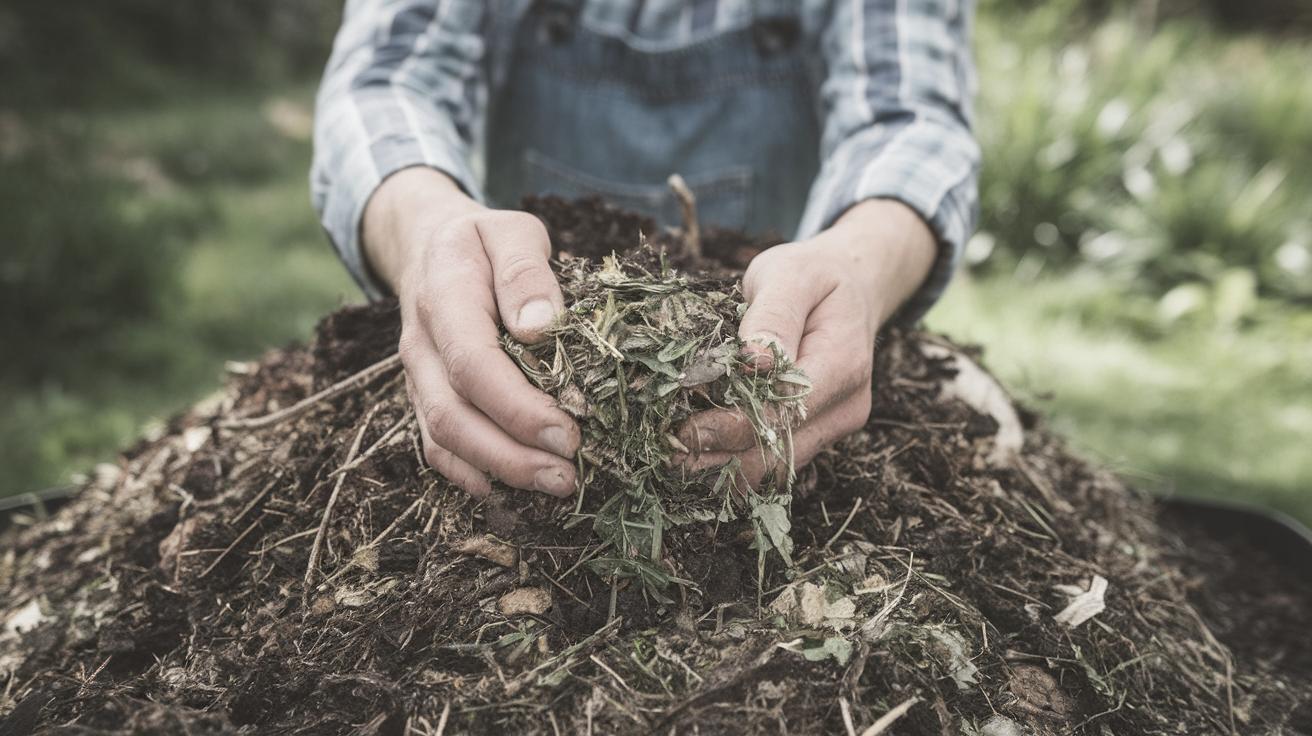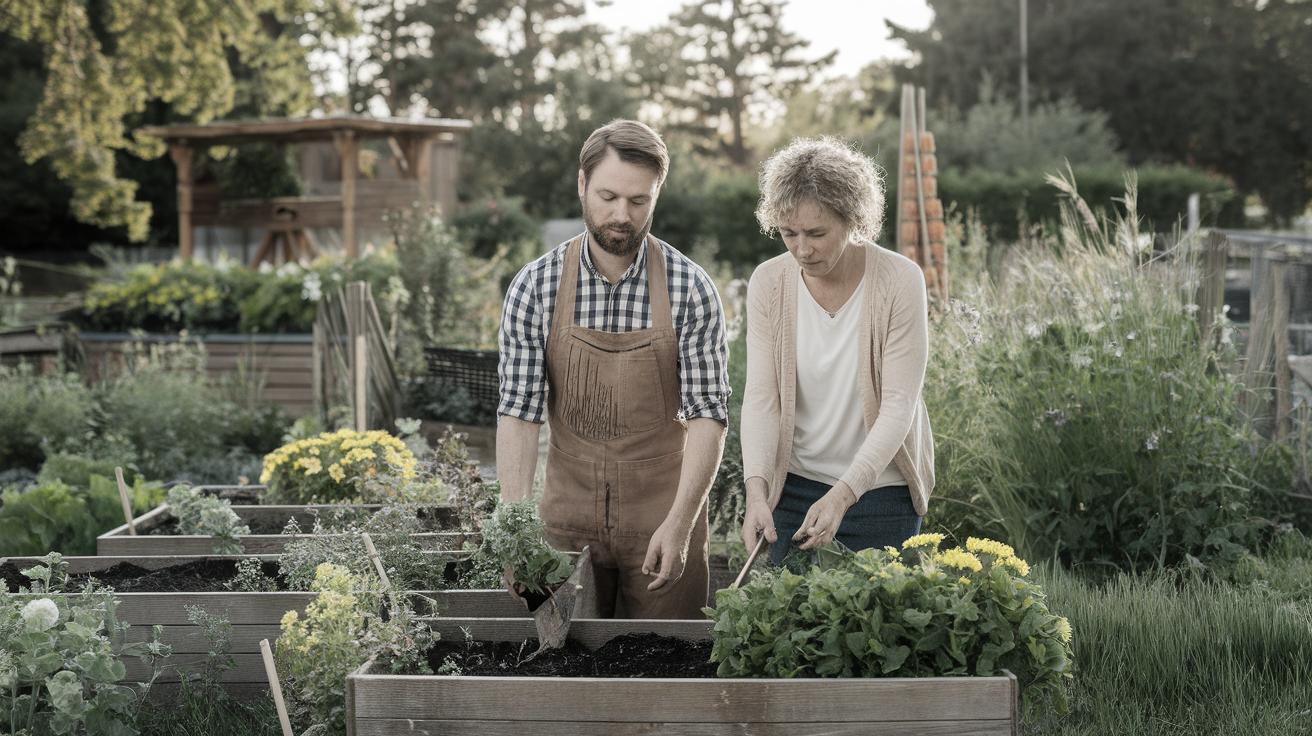How to Maintain a Compost Pile in the Garden
Composting is an excellent way to enrich your garden soil while recycling kitchen and yard waste. It’s both environmentally friendly and economically beneficial. This guide will help you understand the dos and don’ts of maintaining a healthy compost pile. With expert insights from Richard Jauron and Greg Wallace, you’ll learn how to construct a compost pile, what materials are compostable, which items to avoid, and how to troubleshoot common issues like odors or unduly slow decomposition. By the end, you’ll be equipped with the knowledge to successfully break down organic waste into nutrient-rich compost, enhancing your gardening efforts.
Do:
One of the first steps to maintaining a compost pile is ensuring proper balance and aeration. You need a mix of green (nitrogen-rich) and brown (carbon-rich) materials. Aim for a ratio of 2:1, with two parts brown material, like dry leaves or straw, to one part green material, such as grass clippings or vegetable scraps. This balance promotes efficient decomposition.
Turn your compost pile regularly to aerate it. Oxygen is vital for the microbes responsible for breaking down materials. Aeration helps speed up the composting process and prevents the pile from developing anaerobic conditions that could lead to unpleasant odors.
Keeping your compost pile moist but not soggy is also essential. The materials should feel like a damp sponge. If the pile dries out, decomposition slows down. Water it during dry spells or add extra brown materials if it’s too wet.
Don’t:
Avoid throwing meat, dairy, or oily foods into your compost pile. These materials not only attract pests like rodents but also take too long to break down, potentially leading to unpleasant odors.
Do not place pet waste in your compost pile. The bacteria and pathogens in animal feces can be harmful during the composting process and might remain in the compost when it’s added to your garden, potentially contaminating your soil and plants.
Another important aspect is to avoid adding diseased plants or weeds that have gone to seed, as these can persist through the composting process and reintroduce problems into your garden.
Richard Jauron
Richard Jauron, a horticulturist, advises gardeners on the importance of monitoring the temperature of their compost piles. He suggests investing in a compost thermometer, noting that an internal temperature of 130 to 160 degrees Fahrenheit is ideal for rapid composting and killing off unwanted pathogens and seeds.
Jauron also recommends maintaining a pile size of at least 3 feet by 3 feet by 3 feet. This size retains heat well and promotes efficient decomposition. Smaller piles may dry out too quickly, while significantly larger piles may not heat uniformly.
Greg Wallace
Composting expert Greg Wallace emphasizes the importance of patience and persistence. He advises not to be discouraged by initial setbacks, as the composting process can take time to perfect. Consistently following best practices while adjusting as needed will yield results.
Wallace also talks about the value of community composting initiatives. Sharing tips, tools, and experiences with neighbors can enhance learning opportunities and lead to better composting outcomes for everyone involved.
How do you construct a compost pile?
To construct a compost pile, start with a base layer of coarse materials, like twigs or straw, to facilitate airflow. Stack alternating layers of brown and green materials, maintaining the proper ratio. Pile design can vary from free-standing heaps to structured bins, depending on available space and preference.
Enclose the pile with a bin or chicken wire to keep it tidy and protected from pests. A lid or tarp can help regulate moisture levels and temperature but ensure it allows for some air exchange.
What types of material can be placed in a compost pile?
Your compost pile thrives on organic materials. Add fruit and vegetable scraps, coffee grounds, eggshells, grass clippings, and dry leaves. These materials provide the necessary nitrogen and carbon components for decomposition.
Additionally, you can include tea bags (remove synthetic parts) and shredded paper. Just be sure that everything is broken into smaller pieces, as this speeds up the decomposition process by increasing surface area.
What types of material should not be placed in a compost pile?
As mentioned earlier, avoid meats, dairy, and oily foods as they do not decompose well and can attract pests. Refrain from adding synthetic materials like plastics, treated wood, and non-biodegradable items.
Plants treated with pesticides or herbicides, human or pet waste, and certain invasive weed species should also be avoided to ensure the final compost is safe and beneficial for garden use.
Can I put disease-infested plant material in the compost pile?
It’s generally advised not to put disease-infested plant material in your compost pile, as most composting methods may not reach the necessary temperatures to kill pathogens. If you decide to compost them, ensure your pile reaches a high enough temperature and monitor closely.
Alternatively, you can dispose of diseased plants through municipal waste to prevent spreading pathogens to your garden through compost.
Will a compost pile produce objectionable odors?
A well-maintained compost pile should not produce foul odors. If you notice unpleasant smells, it might be due to improper material balance or lack of aeration. Ensure your pile contains more brown materials than green ones and turn it regularly to introduce air.
Address excess moisture by adding dry materials and covering your pile during heavy rains to prevent it from saturating and smelling.
How long does it take a compost pile to break down?
Composting times can vary based on factors like material composition, pile size, and environmental conditions. Generally, a well-maintained compost pile can break down within 2 to 6 months.
Factors such as cold weather, a lack of aeration, or the absence of necessary microorganisms can significantly slow the process. Patience and consistent care are key to achieving a nutrient-rich end product.
Next steps
| Action | Details |
|---|---|
| Maintain Balance | 2 parts brown material to 1 part green; ensures efficient decomposition. |
| Regular Aeration | Turn pile frequently to provide oxygen and prevent odors. |
| Compost Size | 3x3x3 feet optimal for heat retention and decomposition. |
| Material Restrictions | Avoid meat, dairy, and weeds with seeds to prevent pests and pathogens. |
| Patience | Expect a breakdown period of 2-6 months depending on conditions. |
| Temperature Monitoring | Use compost thermometer to ensure pathogen-destroying heat levels. |


